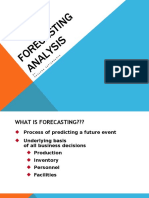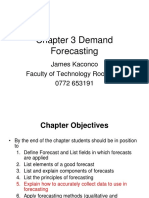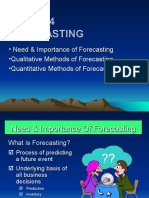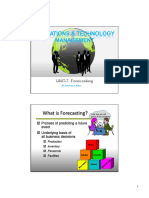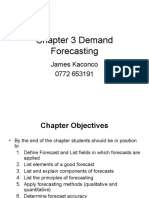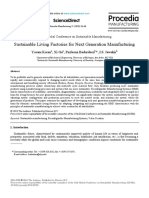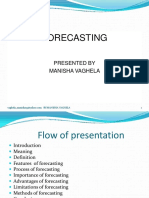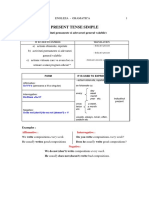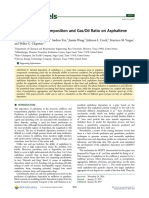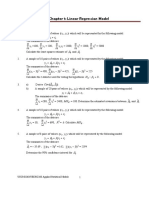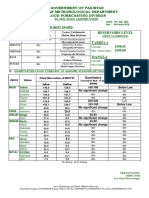0% found this document useful (0 votes)
52 views30 pagesForecasting
Forecasting involves predicting future events or trends based on historical data. There are different types of forecasts based on time horizon (short, medium, long-range) and what is being predicted (economic, technological, demand). Demand forecasting underlies business decisions and can be done using qualitative or quantitative methods. Quantitative methods include time series models which analyze trends, seasonality, and cycles in past demand data. Common time series models are naive, moving average, and exponential smoothing.
Uploaded by
bittu00009Copyright
© © All Rights Reserved
We take content rights seriously. If you suspect this is your content, claim it here.
Available Formats
Download as PDF, TXT or read online on Scribd
0% found this document useful (0 votes)
52 views30 pagesForecasting
Forecasting involves predicting future events or trends based on historical data. There are different types of forecasts based on time horizon (short, medium, long-range) and what is being predicted (economic, technological, demand). Demand forecasting underlies business decisions and can be done using qualitative or quantitative methods. Quantitative methods include time series models which analyze trends, seasonality, and cycles in past demand data. Common time series models are naive, moving average, and exponential smoothing.
Uploaded by
bittu00009Copyright
© © All Rights Reserved
We take content rights seriously. If you suspect this is your content, claim it here.
Available Formats
Download as PDF, TXT or read online on Scribd
/ 30










